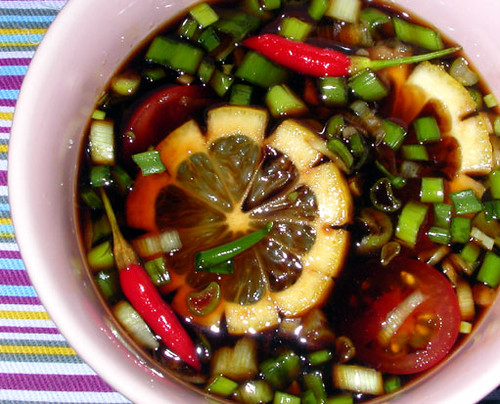During my time playing for and serving on the board of the Philadelphia Gryphons, I became very good friends with a former classmate and colleague, Joe. Joe is Guamanian or, as we lovingly teased, Guamish. He came to Philadelphia somewhat on a lark. A Penn alumnus in Hagåtña had mentioned that Joe should apply to Penn. It was a good school; if it was good enough for the alumnus, it was good enough for Joe. Only applying to two Universities – Penn and the University of Guam, Joe got into Penn and he headed to Philadelphia. Little did he know that he was going to school a lot of us about our territory in the Pacific.
| A view of Hagåtña, the capital of Guam - image courtesy of Wikipedia |
During this time, Joe’s sister come to live for a spell and their mother would send care packages from Guam. I remember Joe being very excited that a mailing of titiyas had come in. From the Spanish, torillas, these are flour flatbreads made with coconut milk. Joe asked the few of us working if we wanted to try some authentic Guamanian food. We were game.
 |
| Titiyas |
Kelaguen is a Chamorro specialty that can be made with cooked chicken or raw shrimp, fish or beef. The pickling marinade of lemon juice, fresh coconut, green onions, salt and hot chilis is the hallmark of the kelaguen. Like ceviche, the marinade denatures the raw meat into a chemically “cooked” protein. The dish is served cold or at room temperature and eaten on its own, over rice, or wrapped in a warm titiyas, like Joe shared with us.
 |
| Chicken kelaguen on a titiyas |
The chicken presents all of the flavors at once – sweet with the creamy and nutty hint of coconut, pungent with the sharp grassy bite and burn of the onions, tart with the sour and bight acid from the lemon and spicy from the slow crescendo of heat from the chili. The chicken itself is tender from the treatment and if it was cooked more traditionally there will be a smoky, almost caramel note from the roasting. I ended up being on kelaguen kick for weeks, until I got too tired from making it all the time.
There is no one recipe for kelaguen; the recipes varies slightly from village to village and between families. The best thing I can suggest is go to the blog, “The Scent of Green Bananas: Food from the Guambat” and read her post on chicken kelaguen. Then play with it and find the seasoning proportions that work for your taste buds, a.k.a. how hot do you like it?
 |
| Finadene |
Finadene is present in many Guamanian households and most of them make their own. Again, I’m going to refer to The Scent of Green Bananas for her recipe, but a basic finadene consists of soy sauce, lemon juice, vinegar, chopped white onion and fresh chilis, which are left to mingle in the refrigerator for at least a day. Variations include lime juice, green onions, lemon slices, cherry tomatoes and sugar for example.
Once you have finadene, you can do anything culinarily. In addition to being a great condiment, finadene and an oil of your choice makes an outstanding marinade. Minus the need for patience, finadene is simpler to make than kelaguen, too. I think I know what I'll be dishing up during the Christmas break.
 |
| I'm hungry just looking at this |
No comments:
Post a Comment